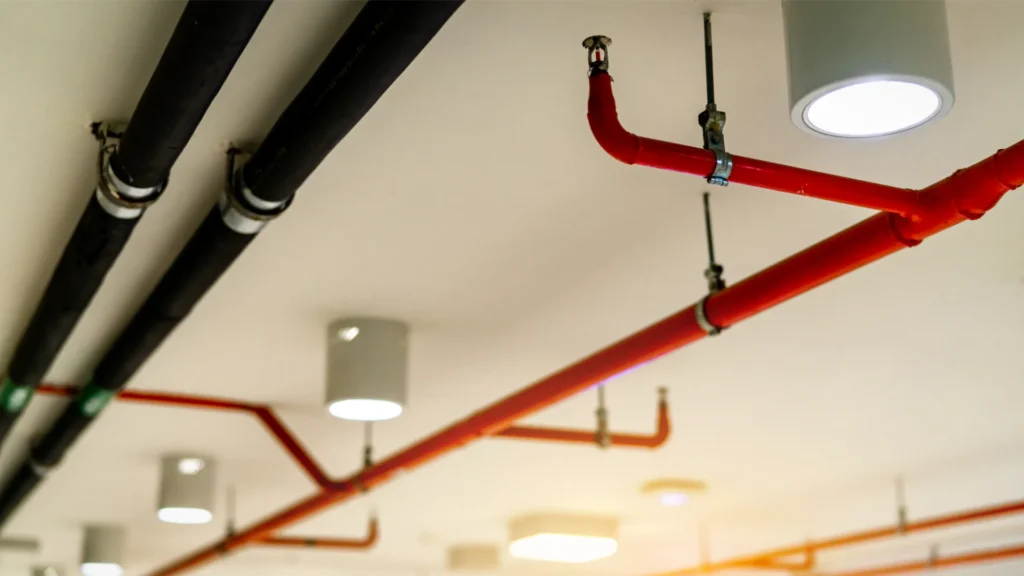Sydney fire safety goes beyond than just checking off boxes. The Annual Fire Safety Statement, or AFSS, is at the foundation of this program. This document not just satisfies all legal requirements but also shows the property owner’s commitment to safety and responsibility. The Annual Fire Safety Statement (AFSS) is the core of the system. It does not only meet the legal requirements but is also a sign of a building’s dedication to safety and accountability.
Why the Annual Fire Safety Statement Exists
The Annual fire safety statement Sydney requirement was never designed to be paperwork for the sake of paperwork. The requirement was created because, no matter how good the fire protection system built, it will only function if it’s regularly maintained, tested and certified. A sprinkler put in place ten years ago might appear to be fine, but without inspection there is no guarantee it will be activated in the event of an emergency.

The AFSS obliges property owners to be able to prove, at least every year, their fire safety measures, ranging from alarms to hydrants, and even exit lighting, still meet the standards originally set by the Building Code of Australia. The AFSS is more than an inspection, but a publicly-proclaimed declaration of the security and durability of the building in the event of a major incident.
What’s the main difference between AFSS and Fire Safety Certificates?
Owners frequently make the mistake of confusing the Fire Safety Certificate with the annual statement, but both certificates have different objectives. The certificate is issued once the installation of a new system takes place or when major upgrades are completed. It is a confirmation that new measures comply with the regulations before the building can be used or rented. The AFSS is a later step. It’s a routine duty that ensures the systems comply with requirements every year.
They create a protection cycle when they’re joined: the certificates verify that security systems were properly installed and the annual reports ensure that these systems are maintained over the lifetime of the building. If you fail to take care of either of the steps can break the entire chain.
The responsibility of the owner of the building
In New South Wales, the AFSS procedure is unique because the owner of the property has the final responsibility. In contrast to other types of compliance in which defects can be categorized as major or minor and major, the AFSS system does not permit the creation of a structure. The entire statement is invalid when even one of the measures fail.
This means owners must take a proactive role. The owners must meet the strict deadlines to schedule inspections, involving accredited professionals organizing repairs, and sending documents to council. For commercial landlords and strata committees, this also involves coordination between tenants and contractors, as well as insurance companies. This structure, although difficult, is designed to make sure that safety is not affected or delayed.
The broader impact of AFSS in Sydney
The AFSS is not just about legal compliance. It also has wider implications. Tenants typically inquire about the latest safety declaration of a building before deciding to lease space. Likewise, insurers frequently require a copy prior to finalizing coverage. A current Annual Fire Safety Declaration can impact the value of a property as well as tenant trusts and even the rates of insurance.
Councils can get peace of mind that buildings throughout Sydney are continuously monitored. Fire authorities can reduce risks by ensuring that the systems are in place during real emergencies. The AFSS doesn’t just concern safeguarding buildings. It is also about making the city safer as a whole.
Conclusion: AFSS is a Standard of Trust
It could appear to be an administrative burden, but the Annual Fire Safety Statement Sydney is actually an assurance standard. The declaration demonstrates that fire safety isn’t left to fate. It demonstrates the reliability of equipment and that property owners are accountable for the well-being of their residents. If it is paired with a Fire Safety Certificate, it completes a system that verifies both the installation and the continual performance of crucial safety measures.
Owners of property can learn a valuable lesson: AFSS are more than a simple deadline. It is an investment in security, accountability and community trust. In the rapidly growing urban sprawl of Sydney in which thousands of people depend on safe and compliant buildings, this is what truly makes the AFSS important.
